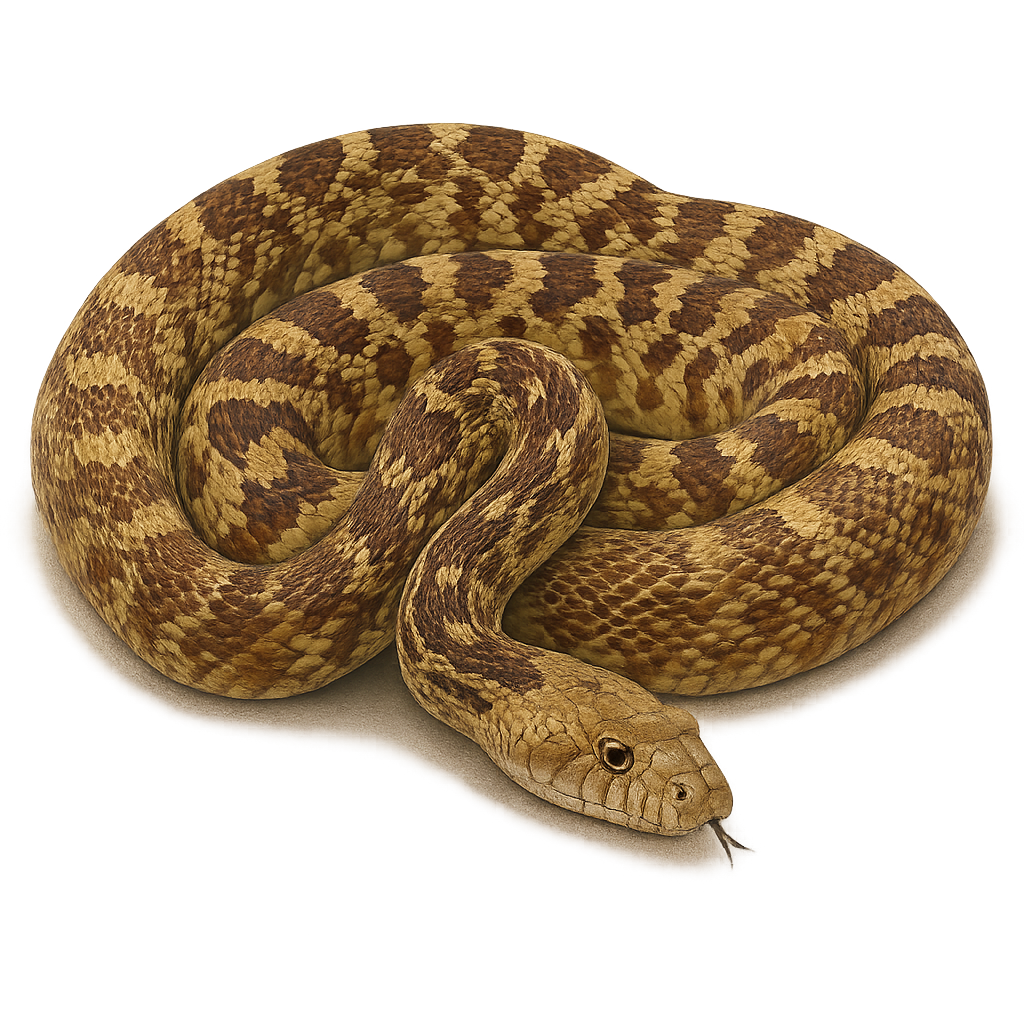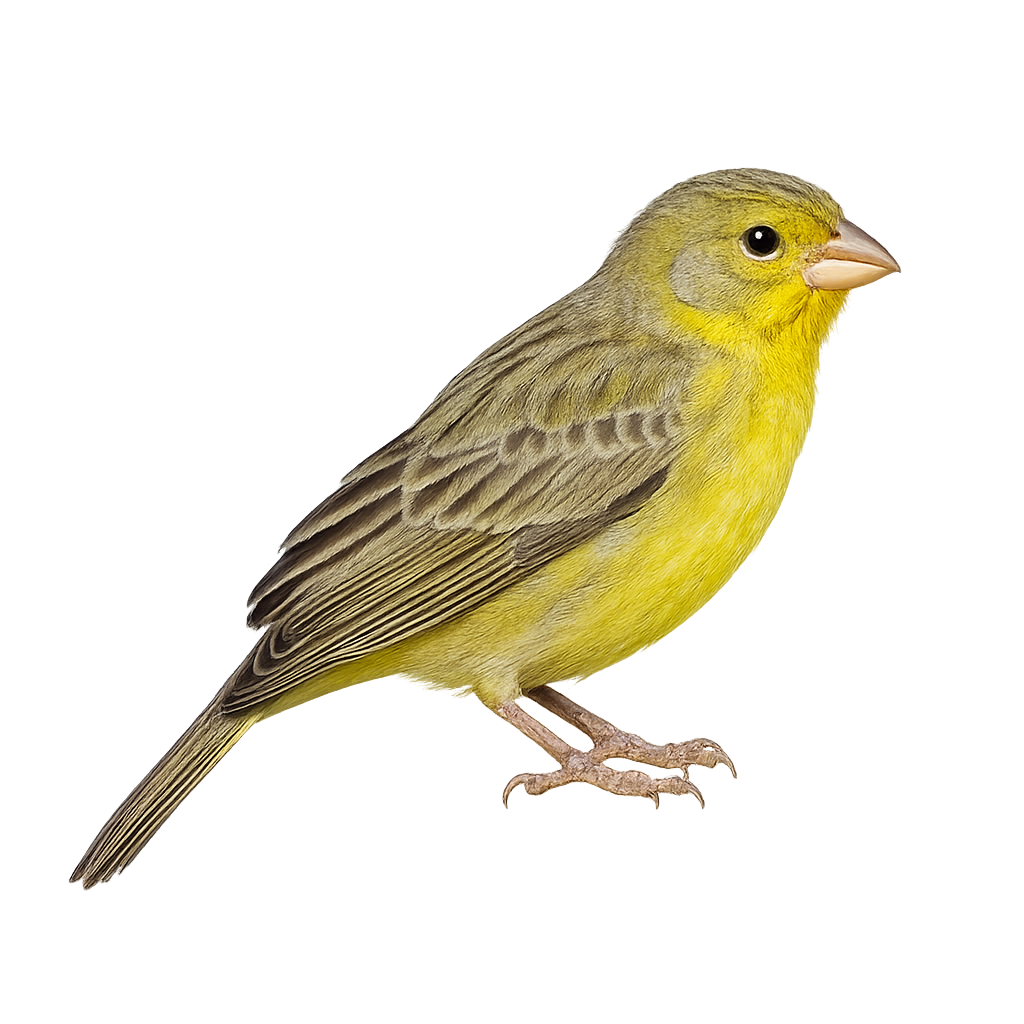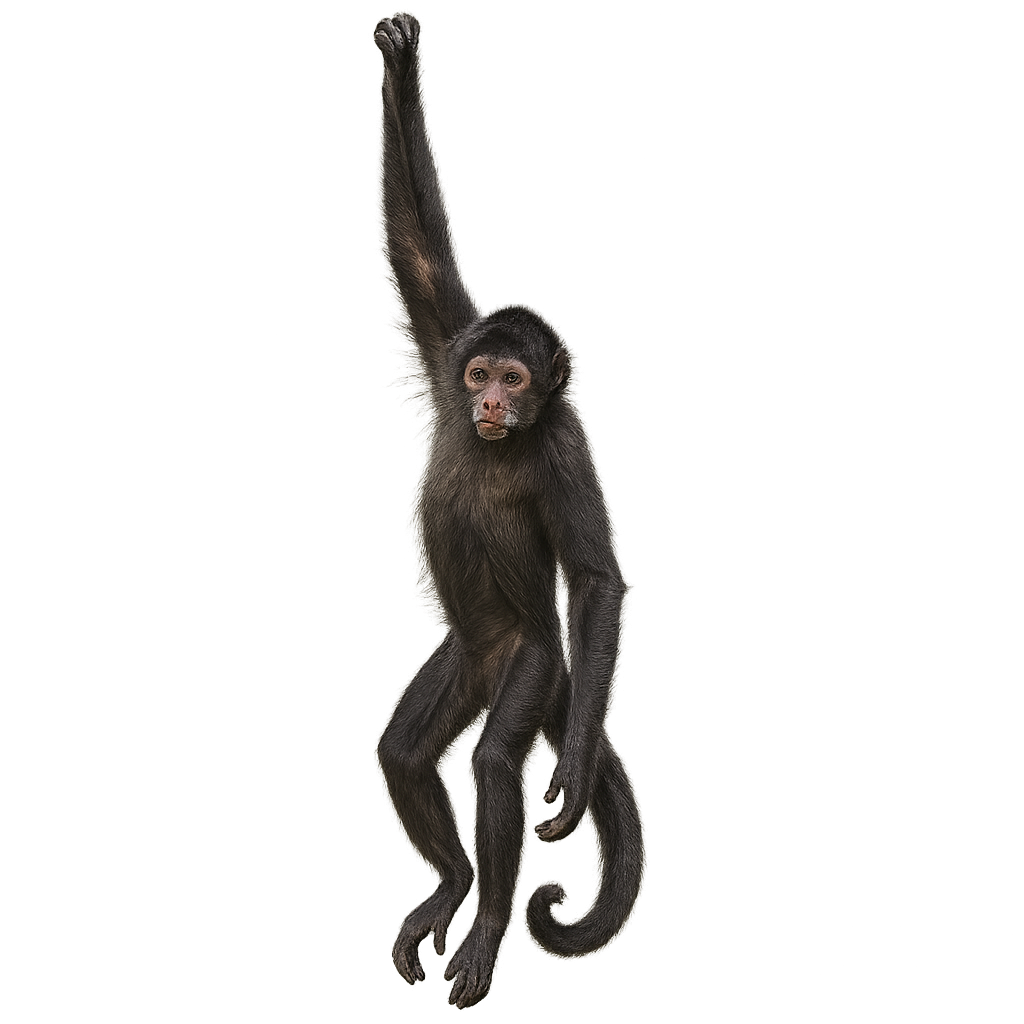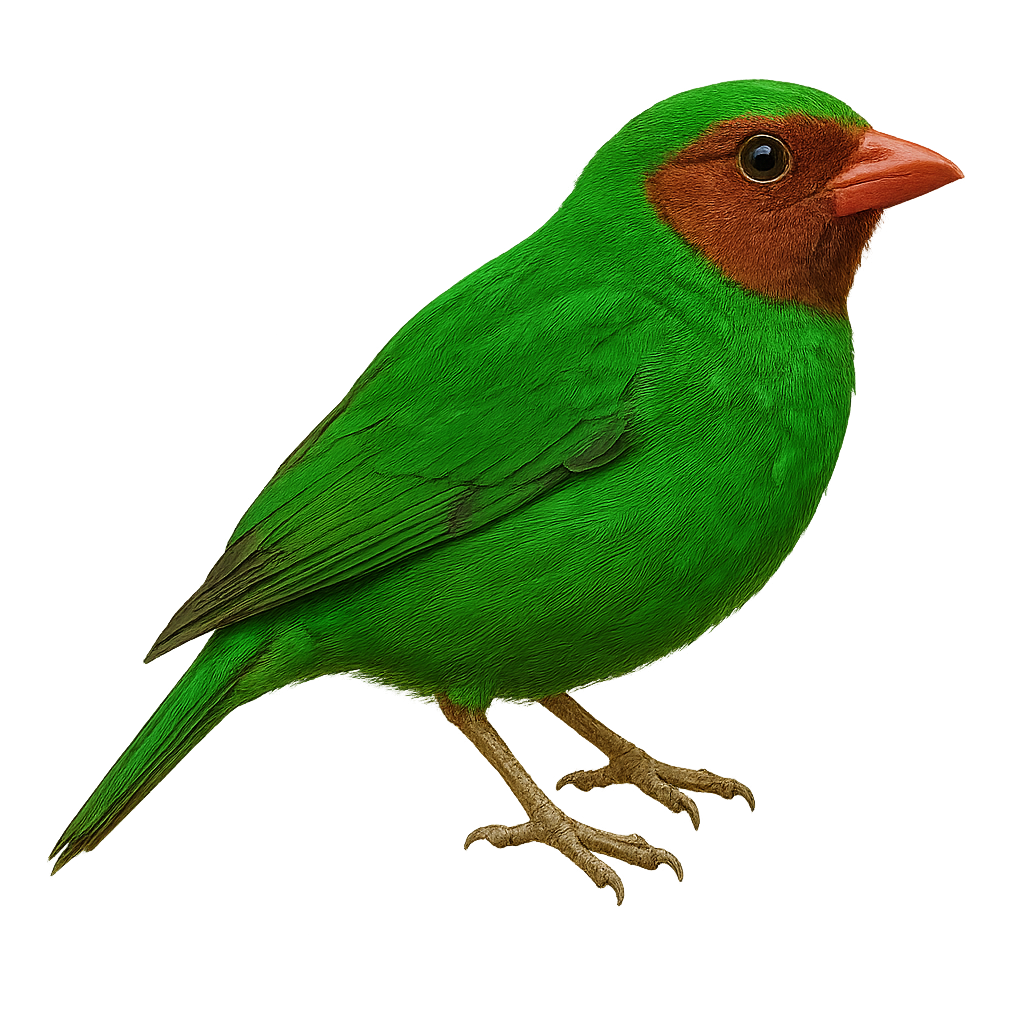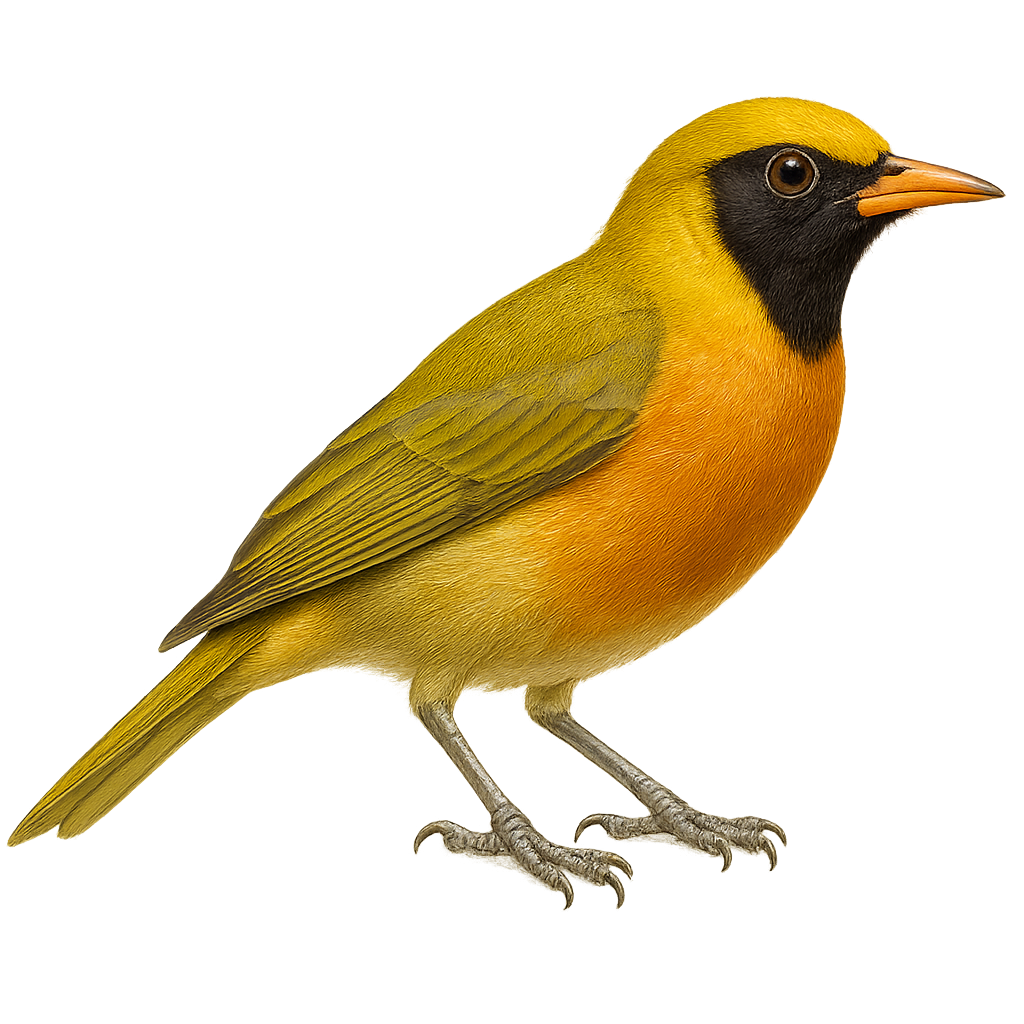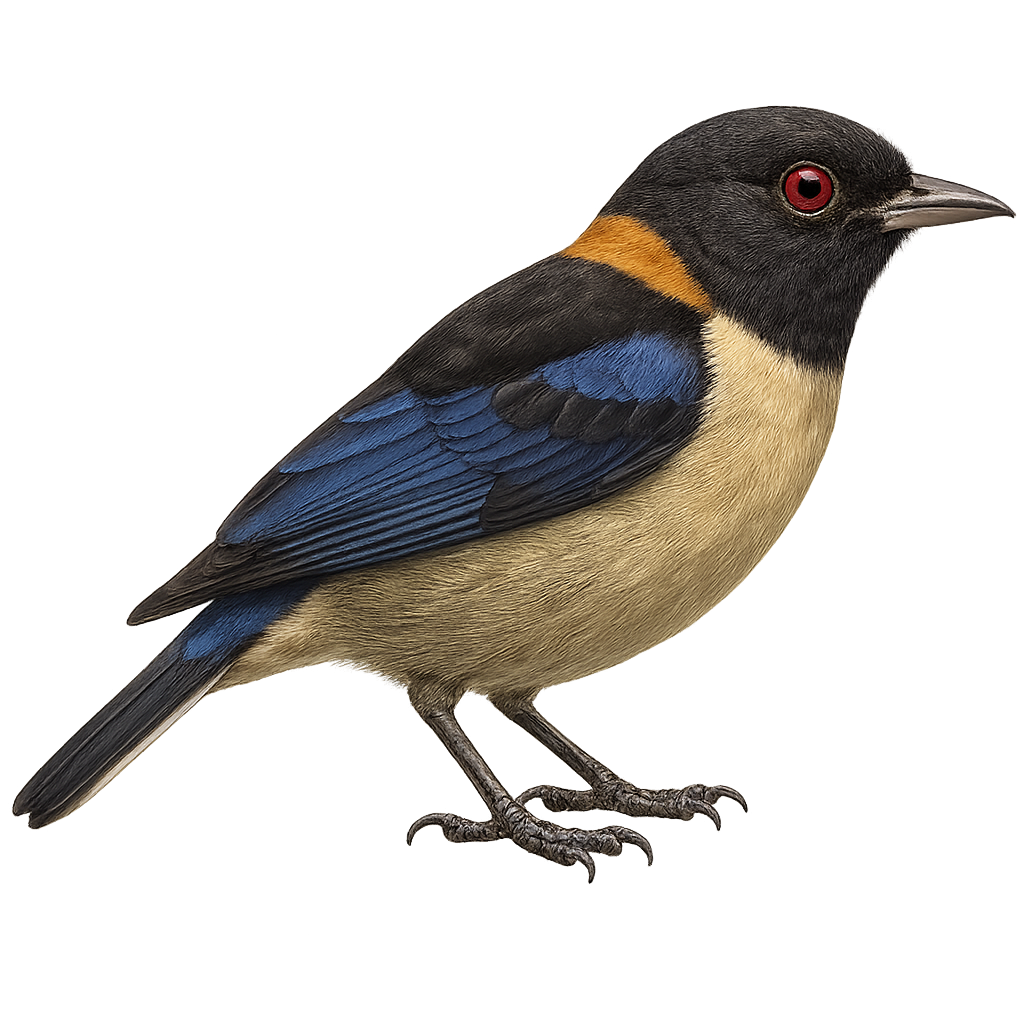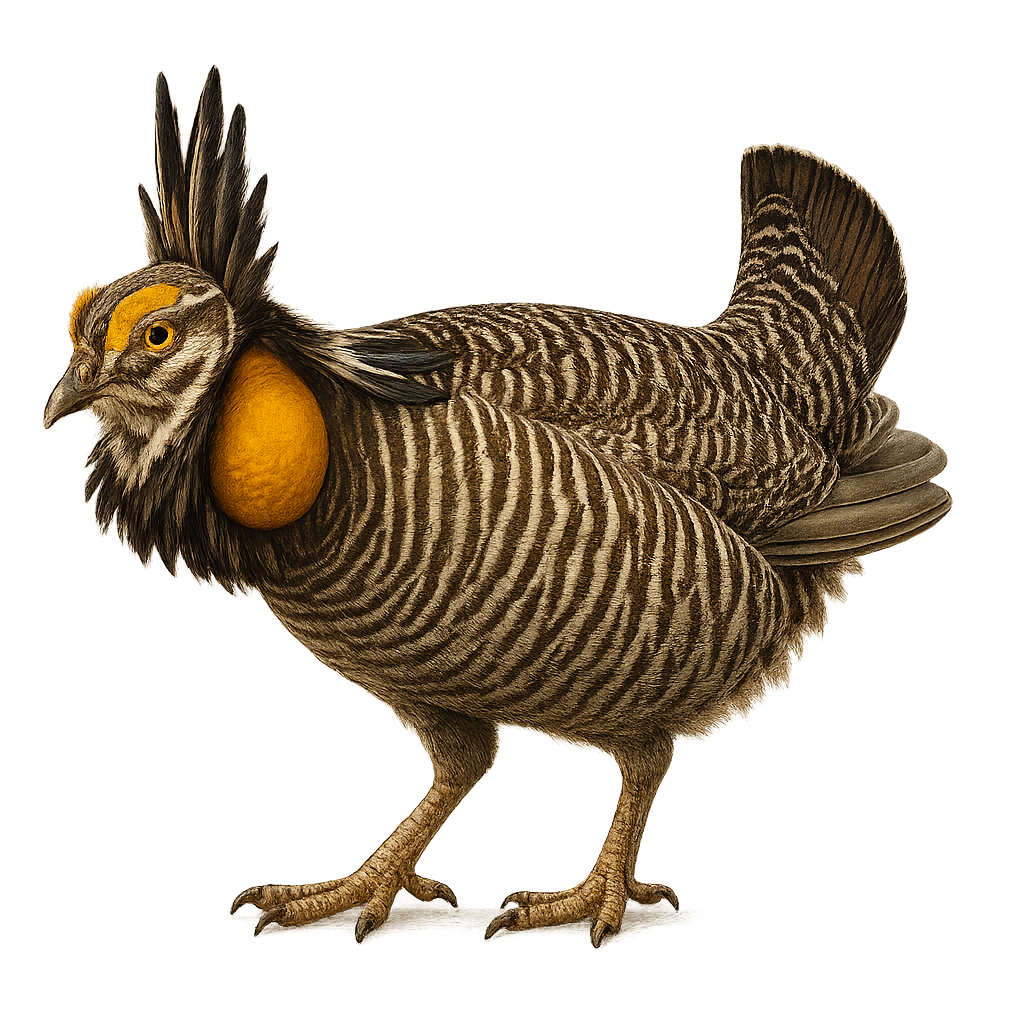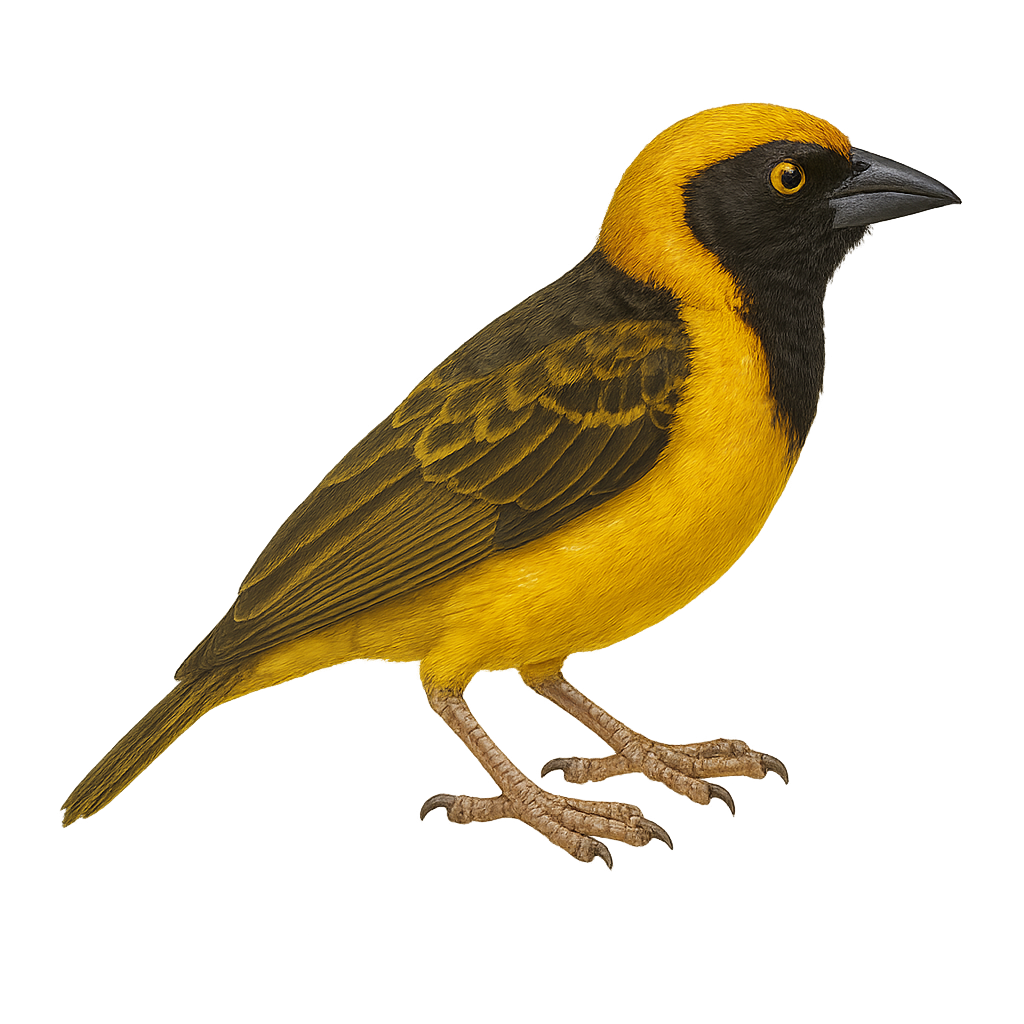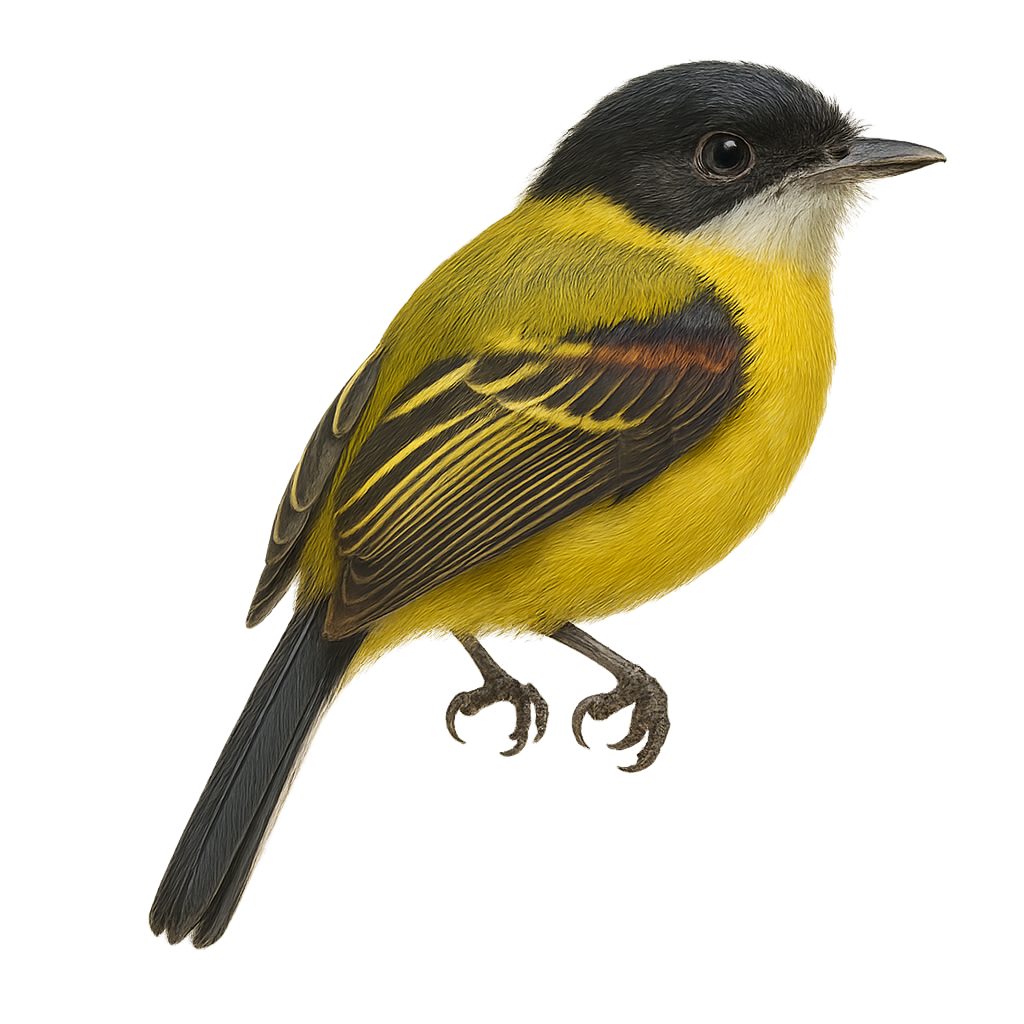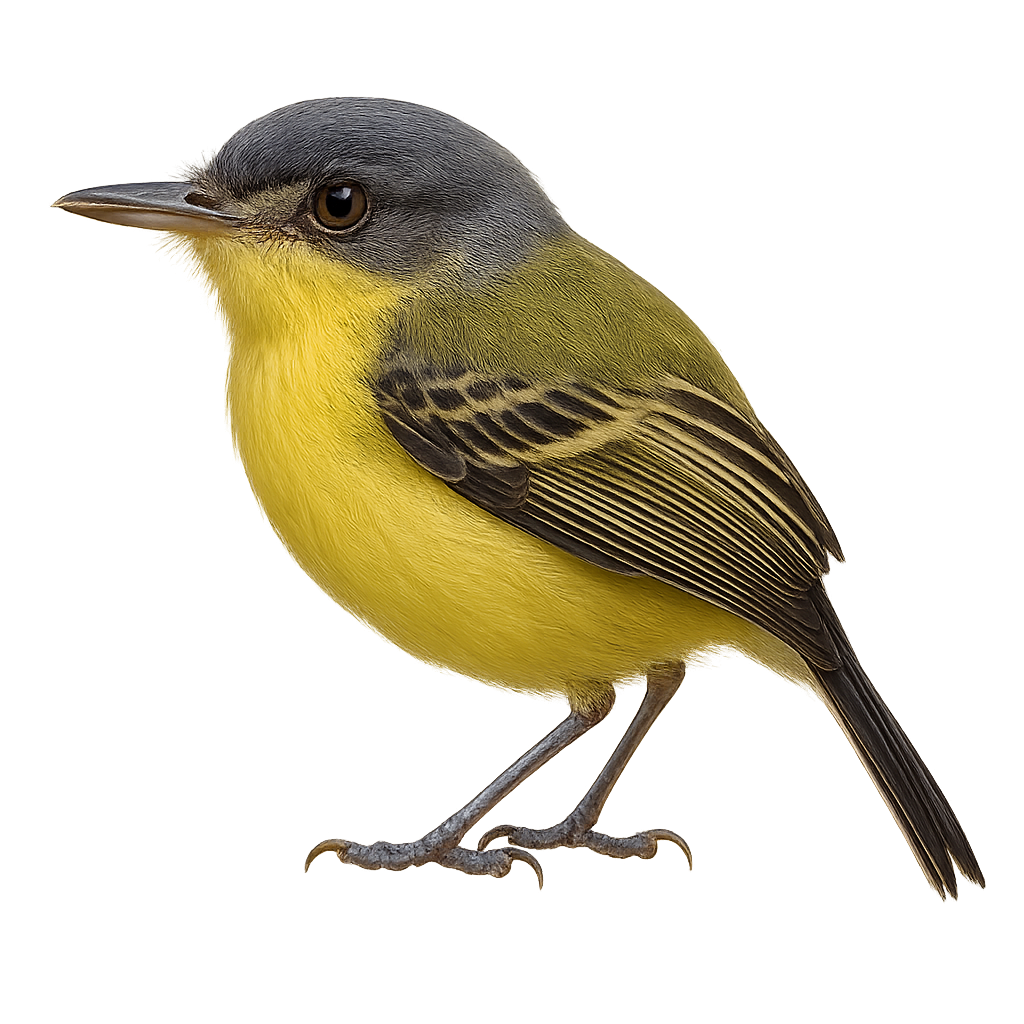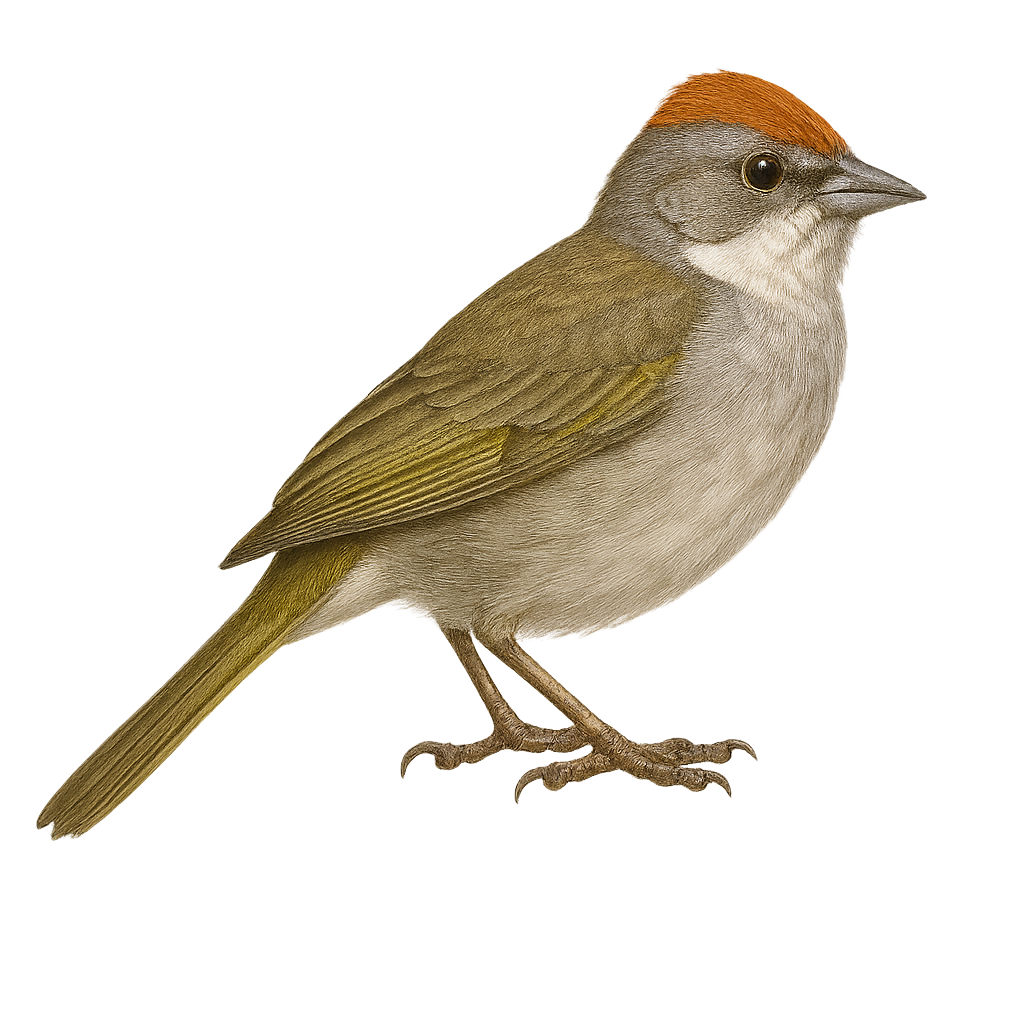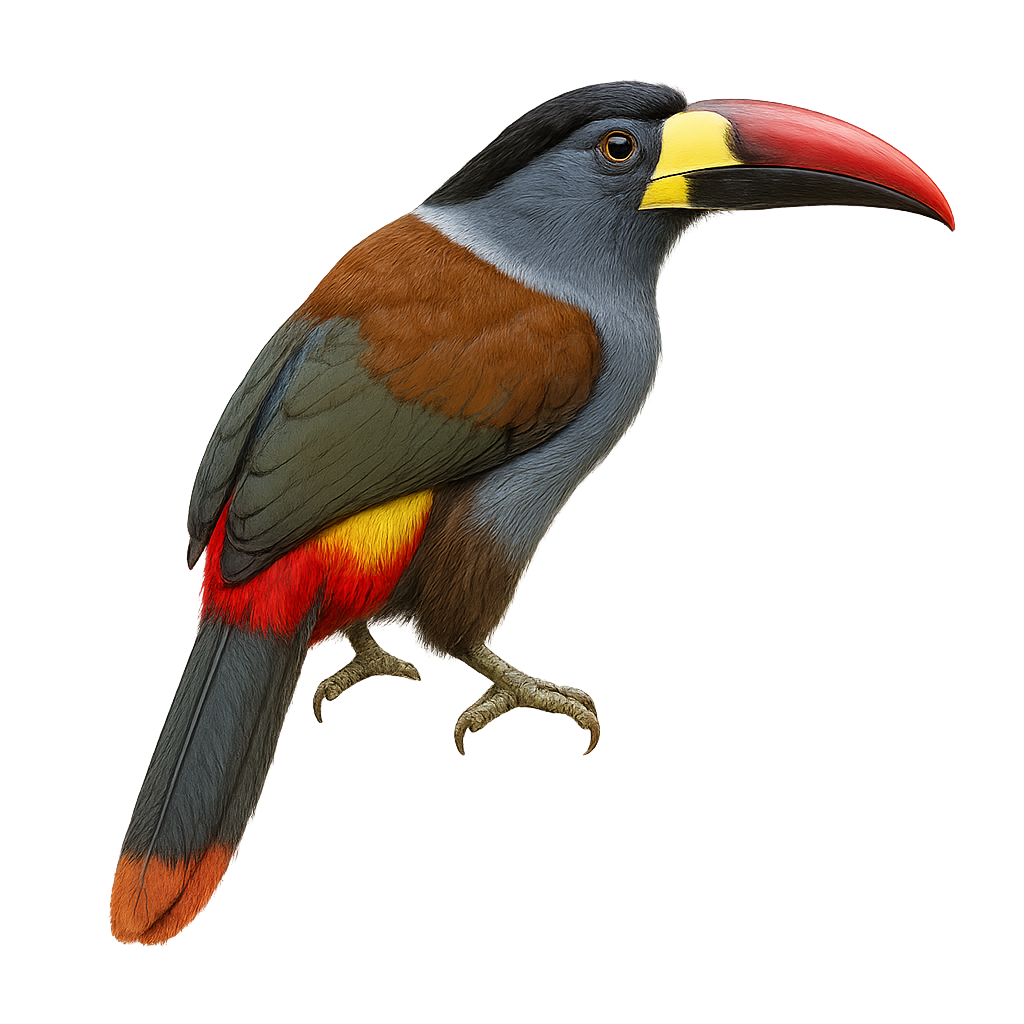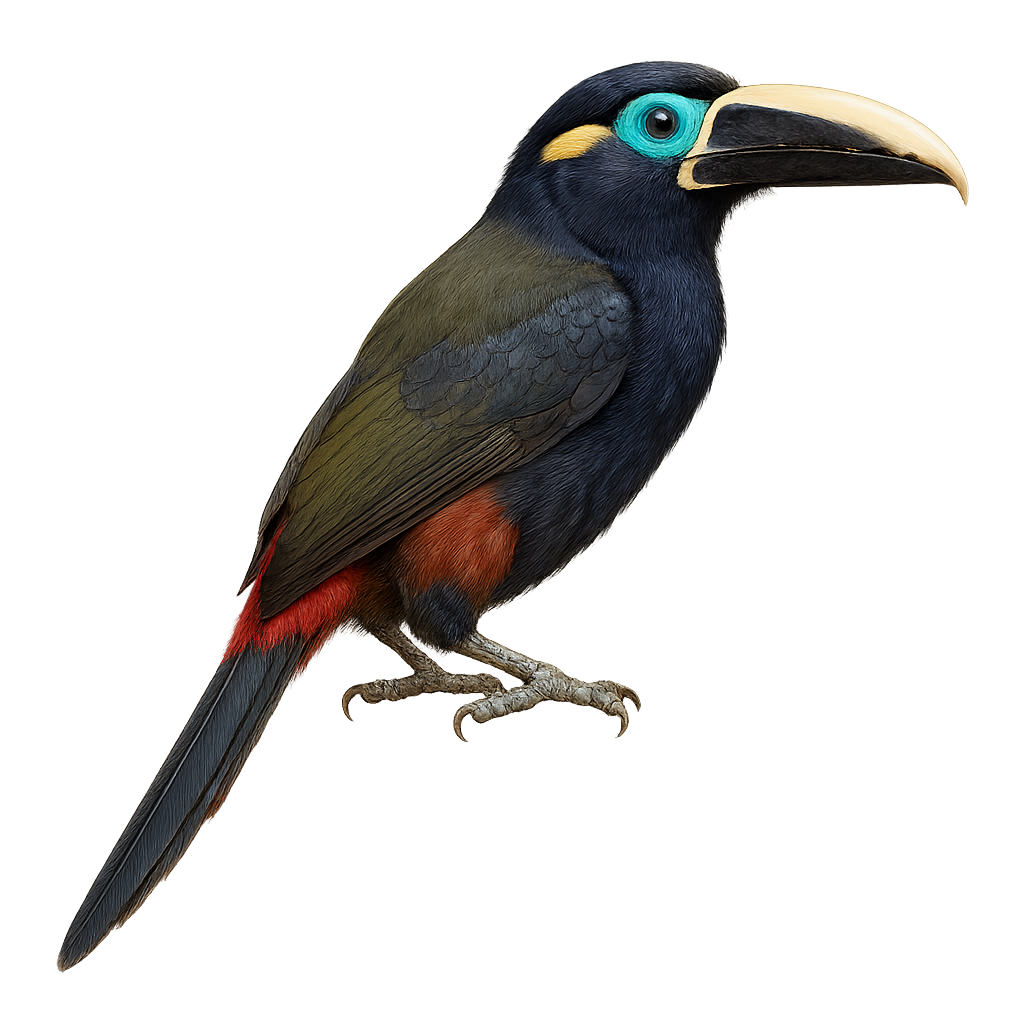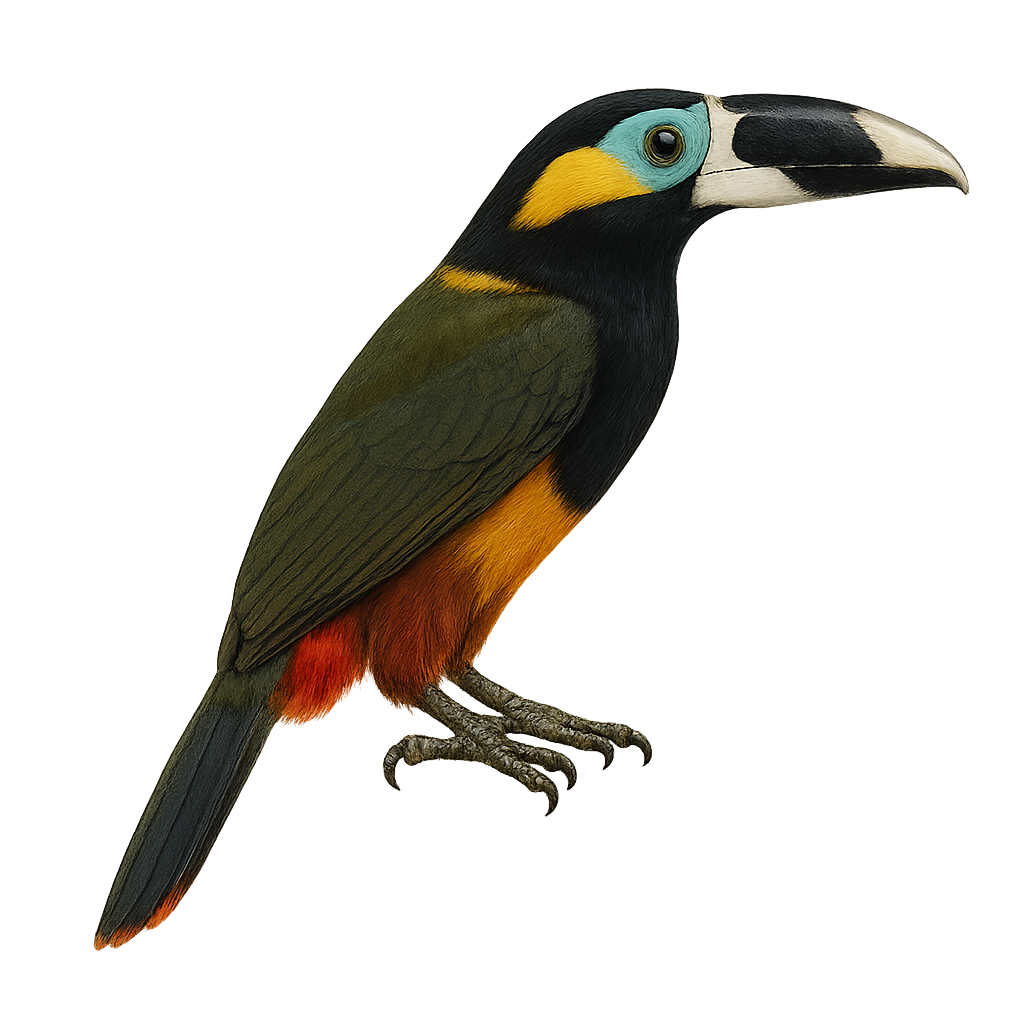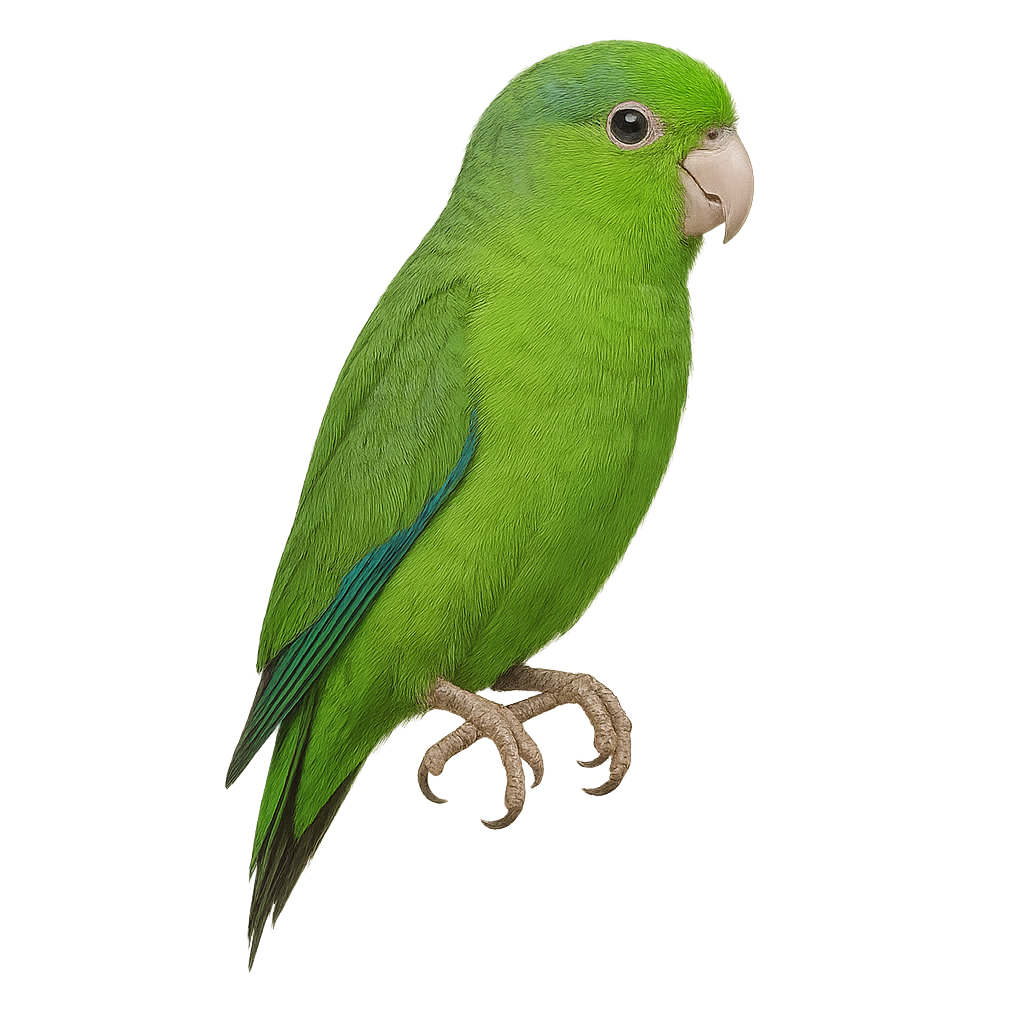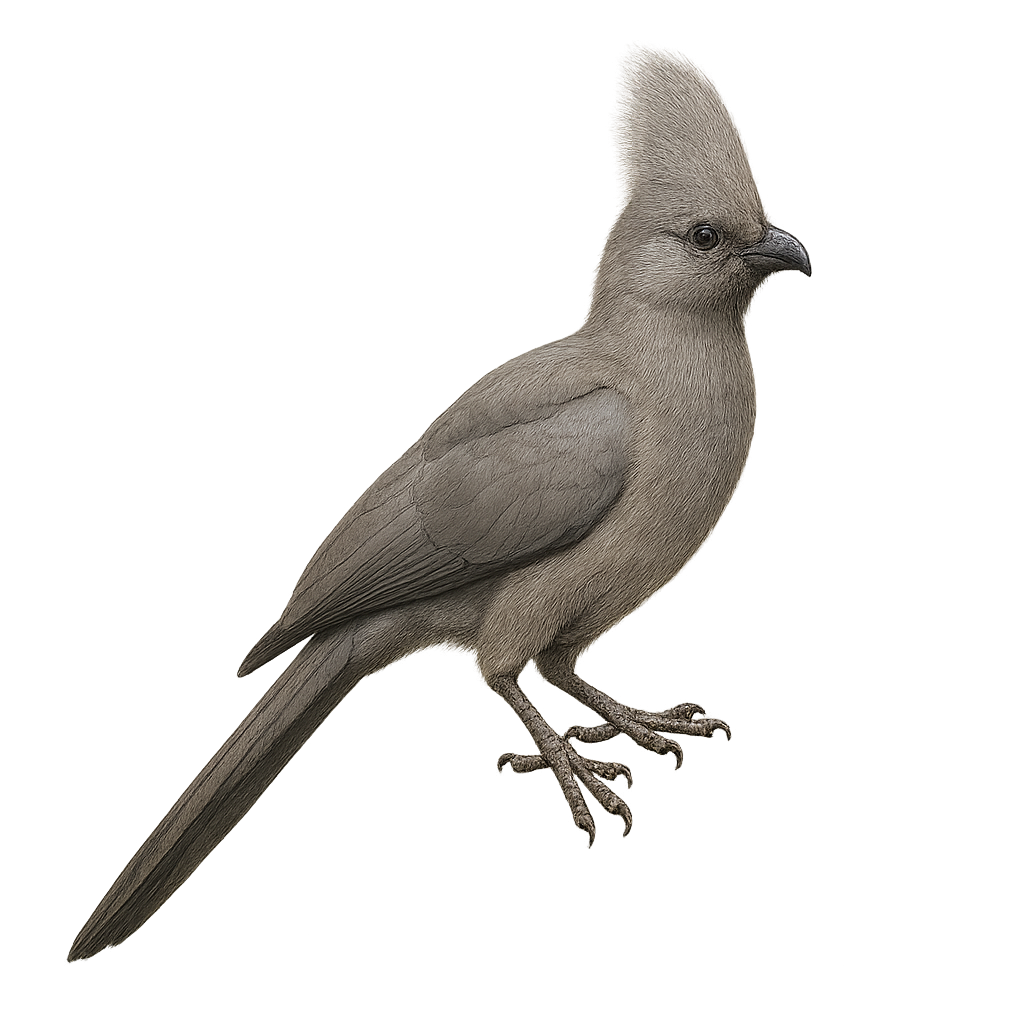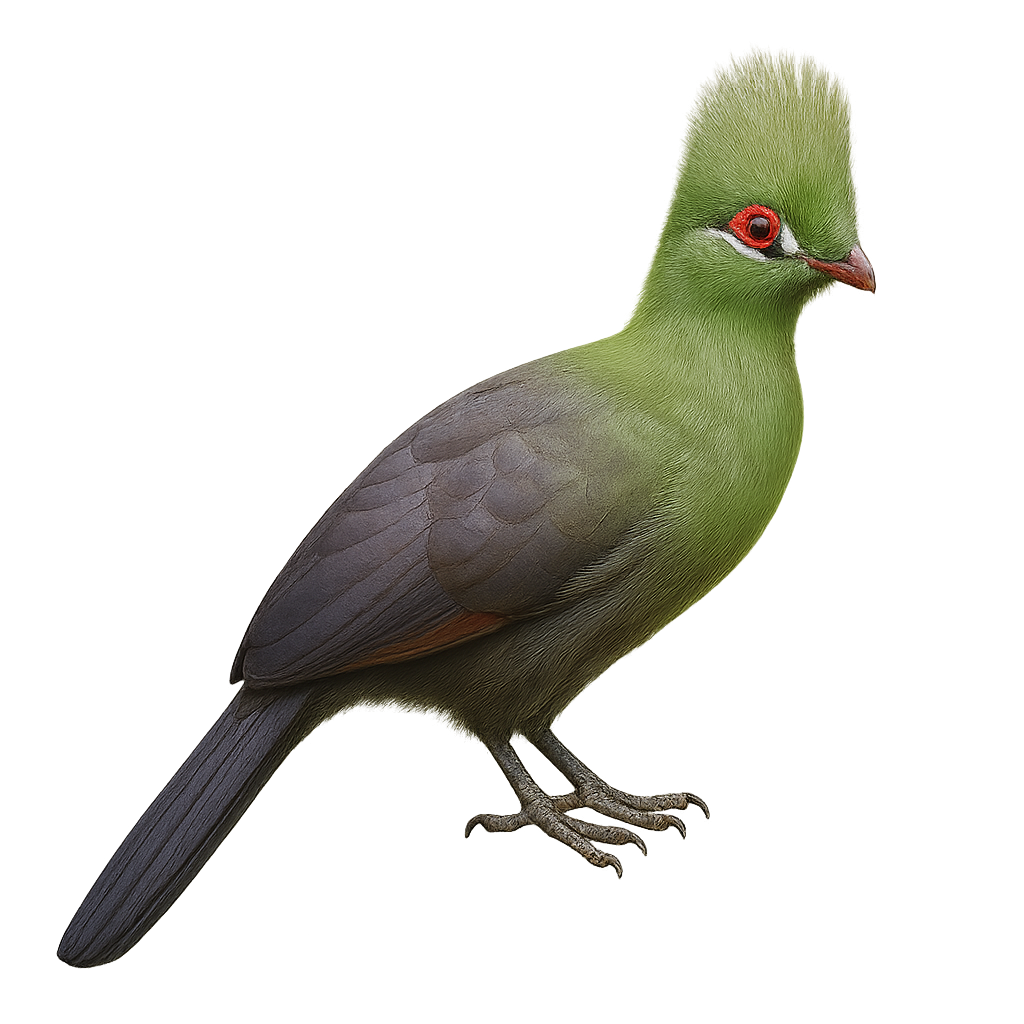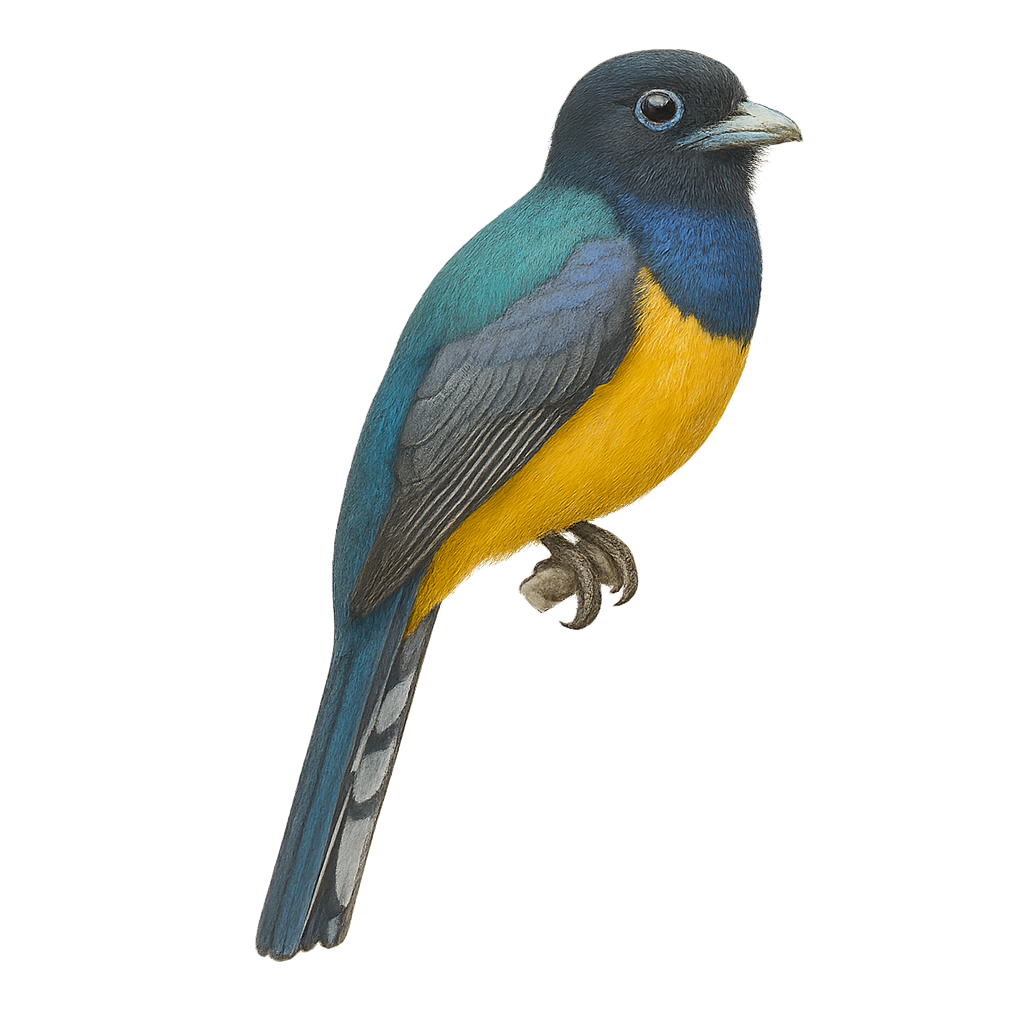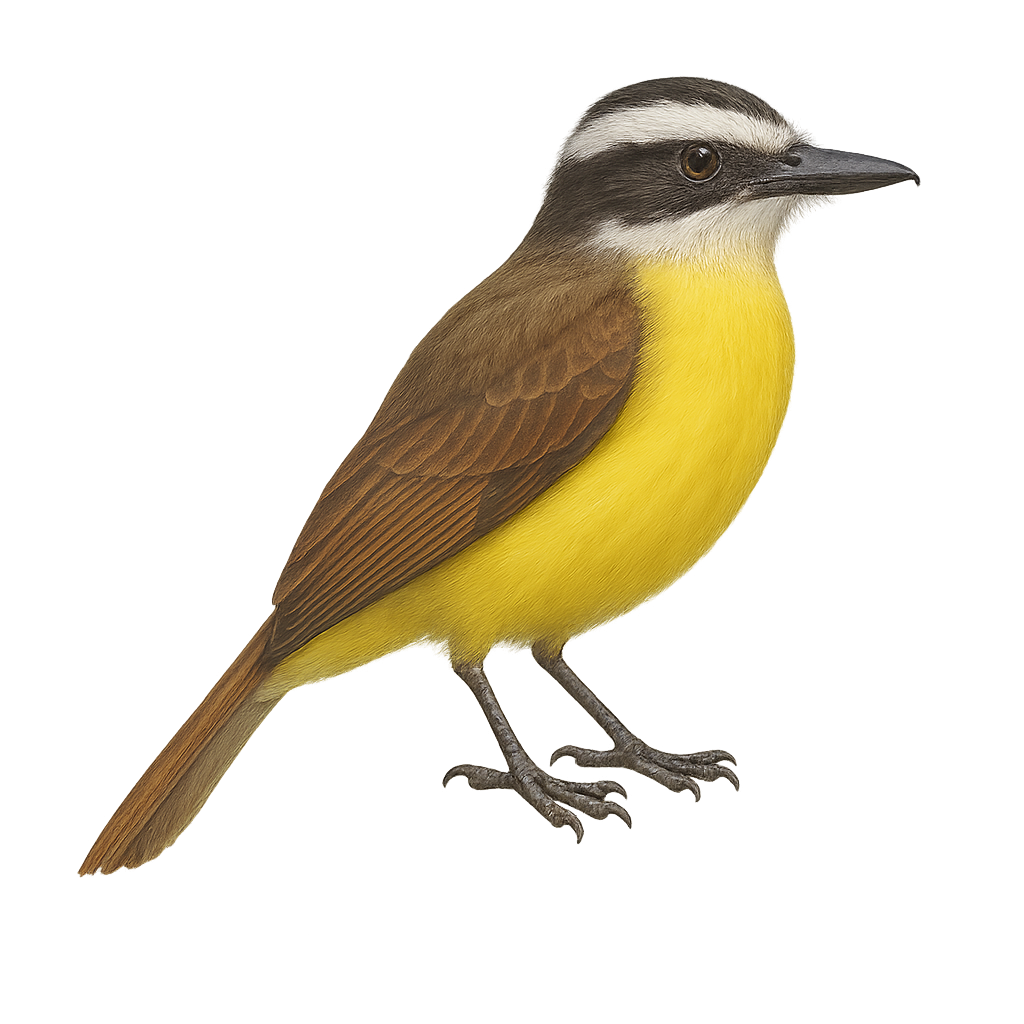The Pituophis catenifer, commonly known as the gopher snake, is a non-venomous snake found primarily in North America. It is recognizable by its robust body and distinctive patterns of brown and black spots on a yellow or cream background. Typically measuring between 90 and 180 cm, it can sometimes reach up to 275 cm. This snake is often mistaken for a rattlesnake due to its defensive behavior, which includes hissing and tail rattling. It inhabits various environments, from grasslands to sparse forests, and plays a crucial role in controlling rodent populations. Although it may seem intimidating, it is harmless to humans and contributes to ecological balance.
The Grassland Yellow-Finch, or Sicalis luteola, is a small passerine bird belonging to the Thraupidae family. It is primarily found in open and semi-open regions of South America, such as savannas, grasslands, and agricultural areas. This bird is notable for its bright yellow plumage, especially in males, while females display duller tones. The Grassland Yellow-Finch is a gregarious bird, often seen in flocks, particularly outside the breeding season. Its song is melodious and varied, making it popular among birdwatchers. Although common within its range, it is sensitive to environmental changes, especially habitat destruction.
The Geoffroy's Spider Monkey is a medium-sized primate primarily found in the tropical forests of Mexico and Central America. It typically measures about 50 to 60 cm in length, with a prehensile tail of around 70 to 80 cm, and weighs between 10 and 20 kg. Its fur is generally brown or black, with lighter spots on the belly and legs. The Geoffroy's Spider Monkey has a highly flexible and prehensile tail, which it uses to grasp tree branches and move easily through the forest canopy. It is primarily herbivorous, feeding on fruits, leaves, flowers, and sometimes small insects. These monkeys live in organized social groups and are primarily active during the day. While they are relatively numerous, they are threatened by deforestation and loss of their natural habitat.
The Golden Monkey, also known as the Roxellana Rhinopithecus, is a medium-sized primate found primarily in the mountains of China, particularly in the provinces of Sichuan and Gansu. It measures about 55 to 70 cm in length, with a tail of 50 to 60 cm, and weighs between 10 and 15 kg. Its fur is a bright golden color, with reddish hues and long hair around the face that forms a kind of mane. The Golden Monkey is primarily herbivorous, feeding on leaves, fruits, seeds, and occasionally small insects. It lives in organized social groups and is often observed in mountainous forests at high altitudes. While it is protected in certain regions, this species is threatened by habitat loss, deforestation, and poaching, which has led to a decline in its population.
The Green Sunbird, or Anthreptes rectirostris, is a small, colorful bird from the Nectariniidae family, primarily found in West and Central Africa. It is distinguished by its vibrant plumage, often metallic green in males, and its slender, straight bill adapted for nectar feeding. This nectarivore is commonly seen in tropical rainforests, forest edges, and occasionally in gardens. Its song is a mix of trills and melodious chirps. Although primarily nectarivorous, it supplements its diet with insects, especially during the breeding season. The Green Sunbird plays a crucial role in plant pollination, thus contributing to the biodiversity of its habitat.
The Golden Lion Tamarin is a small primate found primarily in the tropical forests of southeastern Brazil. It typically measures about 20 to 30 cm in length, with a tail of 35 to 45 cm, and weighs between 500 and 700 g. Its fur is a bright golden orange, giving it a distinctive and striking appearance. The Golden Lion Tamarin is known for its small size, great agility, and complex social behaviors. It lives in family groups and primarily feeds on fruits, insects, nectar, and small vertebrates. Although it is an excellent climber and spends most of its time in trees, this species is threatened by deforestation, habitat loss, and illegal wildlife trade.
The Grass-green Tanager, or Chlorornis riefferii, is a vibrant and fascinating bird primarily found in the humid forests of the Andes. With its bright green plumage, it is distinguished by a reddish head and a robust beak. This bird measures about 20 cm in length and feeds mainly on fruits, insects, and nectar. It is often seen in small groups, moving nimbly through dense foliage. Although its habitat is relatively stable, deforestation poses a potential threat. The Grass-green Tanager is a symbol of Andean biodiversity and plays a crucial role in seed dispersal, contributing to the health of its ecosystem.
The Guira Tanager is a small, colorful bird primarily found in South America, particularly in Brazil, Argentina, and Paraguay. It is easily recognizable by its vibrant plumage, featuring shades of bright yellow, black, and white. Males and females exhibit differences in coloration, with males generally being more vivid. This tanager inhabits tropical rainforests, forest edges, and sometimes open wooded areas. It feeds mainly on fruits, insects, and nectar, playing a significant role in seed dispersal and pollination. The Guira Tanager is a sociable bird, often seen in small groups or pairs, and is known for its melodious and varied songs.
The Golden-collared Honeycreeper, or Iridophanes pulcherrimus, is a small, striking bird from South American montane forests, with vibrant plumage combining bright blue, vivid yellow, and deep black. It inhabits forest edges, shrubby zones, and cloud forests from Venezuela to northern Bolivia. Feeding on fruits, nectar, and insects, it often joins mixed-species flocks in the canopy. Energetic and colorful, it is a favorite among birdwatchers and nature photographers. Its population is currently considered stable.
The Giant Armadillo is the largest of the armadillos, found primarily in the tropical forests of South America, notably in Brazil, Bolivia, Paraguay, and Argentina. It typically measures between 1.5 and 2 meters in length, including its tail, and can weigh up to 60 kg. Its fur is rough and brown, and it has a hard shell, typical of armadillos, which serves as protection against predators. The Giant Armadillo is primarily nocturnal and terrestrial, feeding mainly on insects, worms, fruits, and roots. While it is an excellent burrower, it is threatened by illegal hunting and habitat destruction, leading to a decline in its population.
The Greater Prairie-Chicken, or Tympanuchus cupido, is a notable bird of the North American Great Plains. Known for its brown and white plumage, it is famous for its elaborate courtship displays where males inflate their orange air sacs and produce deep booming sounds to attract females. These birds primarily inhabit open prairies, feeding on seeds, insects, and small fruits. Unfortunately, their habitat is threatened by intensive agriculture and urbanization, leading to a significant population decline. Conservation efforts focus on protecting and restoring their natural habitats to ensure their long-term survival.
The Ploceus grandis, or Giant Weaver, is a bird from the Ploceidae family, renowned for its nest-weaving skills. It features bright yellow plumage with brown hues on its wings and tail. Its head is adorned with a distinctive black mask, contrasting with its sturdy, conical beak. This social bird lives in colonies and is often found in the savannas and wooded areas of sub-Saharan Africa. It primarily feeds on seeds, insects, and small fruits. The Giant Weaver is also known for its melodious songs and elaborate courtship displays. Although widespread, it sometimes faces threats from habitat loss.
The Golden-winged Tody-Flycatcher, Poecilotriccus calopterus, is a small bird from the Tyrannidae family. It is notable for its golden-winged feathers and primarily olive-green plumage. This bird inhabits humid forests and wooded areas in South America, particularly in Colombia, Ecuador, and Peru. Often seen in pairs or small groups, it feeds on insects caught in flight. Its modest size and discreet behavior can make it difficult to spot. Although its habitat is threatened by deforestation, it is currently listed as "Least Concern" by the IUCN.
The Greenish Tyrannulet, Todirostrum viridanum, is a small bird from the Tyrannidae family, primarily found in the humid forests and wooded areas of Central America. This passerine is distinguished by its olive-green plumage, dark wings, and lighter belly. It is often seen foraging for insects in dense foliage, using its short, broad bill to catch prey. Although discreet, its high-pitched, repetitive song makes it identifiable. The Greenish Tyrannulet plays a crucial role in the ecosystem by regulating insect populations and aiding in seed dispersal. Its adaptability to various habitats allows it to survive despite increasing deforestation.
The Grünschwanz-Grundammer is a medium-sized bird, measuring about 18 to 20 cm in length. It is easily recognizable by its olive-green back, gray chest, and distinctive rufous crown. This bird prefers shrubby habitats and dense undergrowth, often in mountainous regions of western North America. It is primarily granivorous but also consumes insects, especially during the breeding season. The Grünschwanz-Grundammer is a discreet bird, often heard before seen, thanks to its melodious song and distinctive calls. Although generally solitary, it can be observed in small groups during migration.
The Galápagos tortoise is an iconic species of the Galápagos Islands, famous for its massive size, reaching sometimes more than 1.5 meters in length. These tortoises primarily live on the volcanic islands of the archipelago, feeding on vegetation, cactus, and fallen fruits. It is a solitary species that can live for over 100 years. While not immediately endangered, it remains threatened by the introduction of non-native species and the destruction of its natural habitat.
The Greek tortoise is a terrestrial species of tortoise native to the Mediterranean regions, particularly Greece, Turkey, and neighboring countries. It is easily recognized by its light brown to yellow shell, often marked with black patterns. The Greek tortoise is herbivorous, feeding primarily on plants, flowers, and vegetables. It lives in dry habitats such as rocky hills and meadows, and is well adapted to a hot and dry climate. This reptile is slow and discreet, spending much of its life hidden under bushes or rocks.
The Green Sea Turtle is a large marine turtle found primarily in the warm and tropical waters worldwide, notably in the Caribbean, Pacific, Indian Ocean, and along the coasts of many tropical islands. It can reach a length of 1 to 1.5 meters and weigh between 150 and 200 kg, although some individuals can be even heavier. Its name comes from the green color of its body fat. The Green Sea Turtle primarily feeds on seagrasses and aquatic plants, which distinguishes it from other carnivorous sea turtles. It is also an excellent swimmer and can travel long distances between its breeding sites and feeding grounds. While its population has declined due to habitat loss, poaching, and ocean pollution, it benefits from numerous conservation efforts and is protected in many countries.
The Gray-breasted Mountain-Toucan, Andigena hypoglauca, is a captivating bird of the Andes, known for its colorful plumage and distinctive bill. It features a gray breast, contrasting with its vividly colored wings and head. This bird primarily inhabits humid montane forests, feeding on fruits, insects, and occasionally small vertebrates. Its ecological role is vital, especially in seed dispersal. Although its habitat is relatively stable, deforestation poses a potential threat. The mountain toucan is a social bird, often seen in small groups, emitting loud calls for communication.
The Gould's Toucanet, or Selenidera spectabilis, is a colorful and fascinating bird belonging to the Ramphastidae family. It is distinguished by its vibrant plumage, featuring shades of green, blue, and yellow, as well as its large, multicolored beak. This toucanet primarily inhabits the humid tropical forests of Central America, notably in Honduras, Nicaragua, and Costa Rica. It is often observed in small groups, feeding on fruits, insects, and occasionally small vertebrates. Although its conservation status is currently considered "least concern," deforestation and habitat loss pose potential threats to its population.
The Gould's Toucanet, or Selenidera gouldii, is a colorful and fascinating bird primarily inhabiting the humid tropical forests of South America, particularly in Brazil. This small toucan is distinguished by its vibrant plumage, blending shades of green, blue, and yellow, with a characteristic banana-shaped bill. It measures about 30 to 35 cm in length and weighs between 130 and 160 grams. Arboreal, it primarily feeds on fruits but also consumes insects and small vertebrates. Its call is a mix of whistles and clicks, often heard at dawn and dusk. The Gould's Toucanet is a social bird, living in small family groups.
The Golden-collared Toucanet, or Selenidera reinwardtii, is a captivating bird found in the tropical rainforests of South America. It is distinguished by its vibrant plumage, featuring a bright yellow chest contrasted with green wings and a prominent beak. Measuring about 35 cm, it belongs to the Ramphastidae family. This bird is primarily frugivorous but also feeds on insects and small vertebrates. It plays a crucial role in seed dispersal, aiding forest regeneration. The Golden-collared Toucanet is often seen in small groups, emitting loud calls for communication. Although relatively tolerant of human presence, respecting its natural habitat is essential for its survival.
The Green-rumped Parrotlet is a small parrot native to South America, measuring about 12 cm in length. It is predominantly green, with blue tinges on the wings and head in males. Females are generally more uniform in color. This parrot inhabits tropical forests, savannas, and agricultural areas. It is social, often living in groups. Its diet consists of seeds, fruits, and flowers. Although quite common, it is threatened by habitat loss and illegal trade. Its ability to adapt to various environments allows it to survive in disturbed areas.
The Grey Go-away-bird, or Crinifer concolor, is a medium-sized African bird known for its uniform grey plumage and distinctive crest. It measures about 50 cm in length and weighs between 200 and 300 grams. This bird is often seen in small groups, moving nimbly through trees. It is famous for its distinctive call that sounds like "go-away," hence its English name. The Grey Go-away-bird primarily feeds on fruits but also consumes leaves, flowers, and occasionally insects. It is widely distributed in the savannas and open woodlands of sub-Saharan Africa.
The Guinea Turaco, or Tauraco persa, is a striking bird known for its vibrant plumage and distinctive crest. Native to the forests of West Africa, it is characterized by its bright colors, particularly the emerald green body and vivid red wings visible in flight. Measuring about 40 cm in length, it has a short, strong beak, ideal for feeding on fruits, flowers, and leaves. Social in nature, it often lives in small groups and communicates with loud calls. Although primarily arboreal, it occasionally descends to the ground to forage. Its ability to move nimbly through trees is aided by its zygodactyl feet, allowing it to grip branches securely.
The Green-backed Trogon, or Trogon viridis, is a colorful bird found in the tropical forests of South America, particularly in the Amazon. It is distinguished by its vibrant plumage, with a bright green back, yellow belly, and black chest. Males have a blue-black head with a yellow eye-ring, while females have duller tones. This bird measures about 28 to 30 cm in length and feeds mainly on insects and fruits. It is often seen perched motionless, patiently waiting for its prey. The Green-backed Trogon is a sedentary bird, preferring dense forests where it can effectively camouflage itself with its plumage.
The Gartered Trogon, or Trogon caligatus, is a colorful bird found in the tropical forests of Central America. It is notable for its vibrant plumage, with an emerald green back and bright red chest. As its name suggests, its tail is black with white bands. This bird measures about 28 to 30 cm in length and primarily feeds on insects and fruits. It is often seen perched silently in the canopy, moving gracefully between branches. Although relatively tolerant of human presence, it prefers dense wooded areas where it can easily hide. Its breeding season varies by region, but it typically nests in tree cavities.
The Great Crested Flycatcher, Myiarchus crinitus, is a medium-sized bird belonging to the Tyrannidae family. It is easily recognizable by its distinctive crest and olive-brown plumage on the back, contrasting with a bright yellow belly. The wings and tail have rufous tones. This bird is primarily insectivorous, catching its prey in flight or gleaning them from branches. It inhabits open forests, edges, and wooded areas. During the breeding season, it nests in natural cavities or nest boxes. The song of the Great Crested Flycatcher is a clear, melodious whistle, often heard in spring. Although widespread in North America, it migrates to Central America and northern South America for the winter.
The Great Kiskadee is a medium-sized bird, easily recognizable by its bright yellow belly and head adorned with a white and black stripe. It has a sturdy black beak, suited to its varied diet that includes insects, fruits, and small vertebrates. This bird is often seen in open areas, gardens, and light forests, where it perches on exposed branches to monitor its territory. Its distinctive call, resembling its name, is often heard throughout its range, which extends from the southern United States to Argentina. The Great Kiskadee is a social bird, often seen in pairs or small groups, and is known for its boldness against predators.
The Golden-faced Tyrannulet, scientifically known as Zimmerius chrysops, is a small passerine bird belonging to the Tyrannidae family. It is primarily found in the humid forests of the Andes, where it is distinguished by its characteristic golden face and olive-green plumage. This small bird is often seen feeding on insects and fruits in the canopy. Although discreet, its high-pitched and repetitive song makes it easy to spot. The Golden-faced Tyrannulet plays an important role in the ecosystem by participating in seed dispersal and controlling insect populations. Its presence is an indicator of the health of Andean forests.


